The Domus de Janas S'incantu is a small funerary cave carved into the rock, decorated with motifs made in sculpture, engraving and painting with symbolic representations of powerful ritual and propitiatory value, with conceptual abstractions of undoubted magical-religious significance linked to the cult of the Goddess.
The Domus de Janas (the houses of the fairies) are underground tombs so called because, according to Sardinian mythology, they would be the homes of the weaver fairies who hid their treasures there. In Sardinia there are at least 3.500 of these necropolises which appear as cavities in the rock which symbolically recall the shape of the maternal womb. The bodies were covered in red ochre, symbolically repeating the blood of the uterus with which newborn boys and girls were wrapped at the moment of birth. The bodies were placed curled up in a fetal position, just like inside the womb. In their right hand they held a small statuette of the Goddess, as if to protect them as they passed from the state of death to new life.
Among the 3.500 Domus de janas reviewed, 215 are decorated with motifs created in sculpture, engraving and painting. The floor plans are mostly developed in a simple way, sometimes in a very articulated way, gradually enriching themselves, to reach up to 20 rooms. The complexity of the hypogea is the result of renovations and additions that took place over the long period of time, sometimes thousands of years, in which the caves were used. At S'Incantu the ceiling appears carved in bas-relief simulating the structure of the wooden truss of a double-pitched roof provided with a central ridge beam and four transverse joists, taking up the scheme of the roof that covered the pre-Nuragic huts. In the center of the floor there is a hearth with a diameter of about 1 m, characterized by the engraving of four concentric rings and by the presence of a central cup with a diameter of 20 cm.; in this, probably, the votive offerings were placed. In the middle part of the wall opposite the entrance to the main cell, a "false door" originally covered with paintings is carved; this is delimited by a contained triple frame and, laterally, by two large pilasters; in the upper part, this false door seems to support a triple row of large bull's horns that extend "like a boat" along the entire width of the wall.
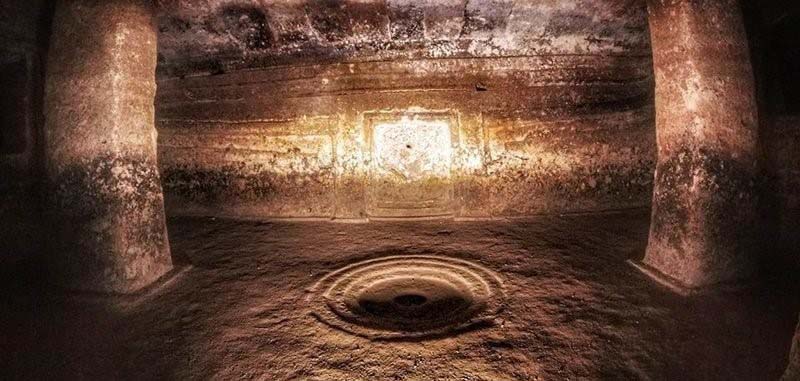
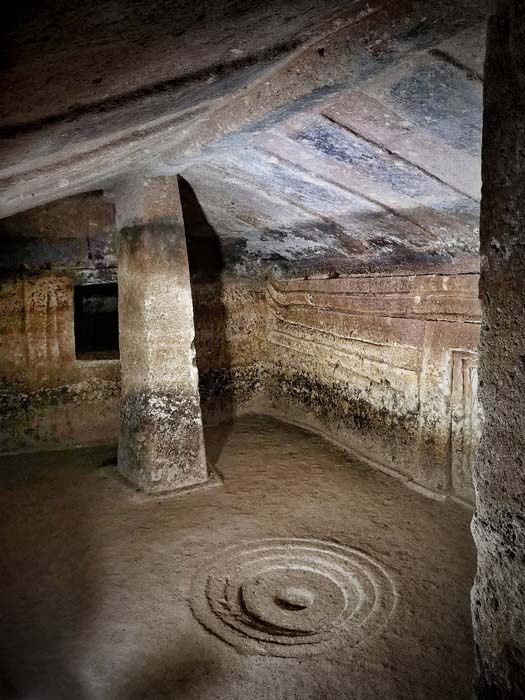
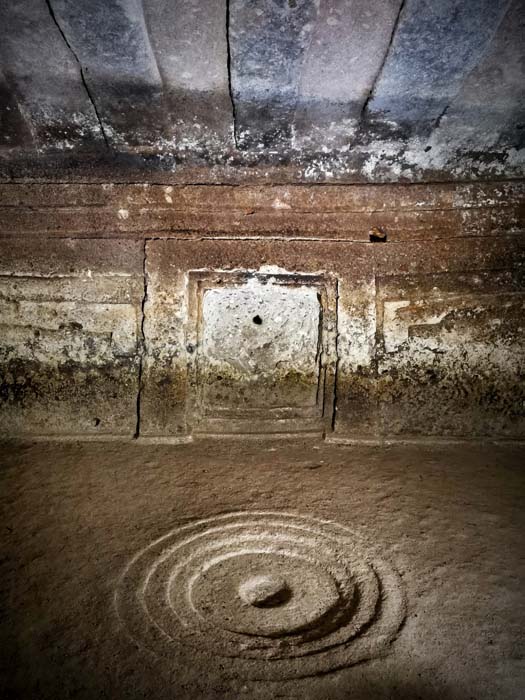
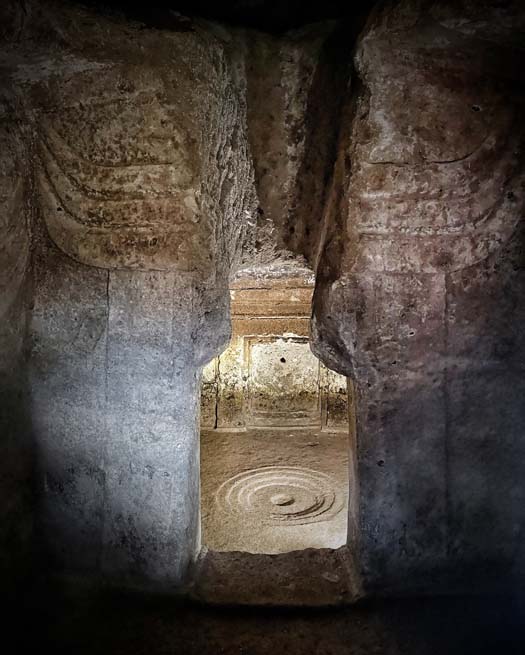
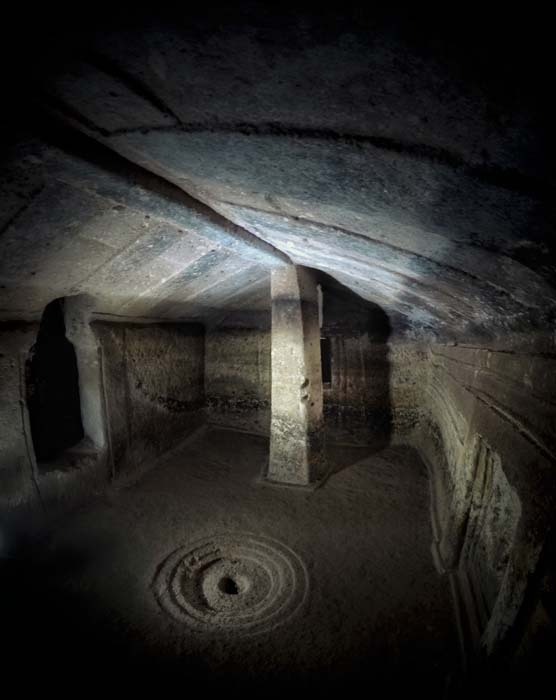
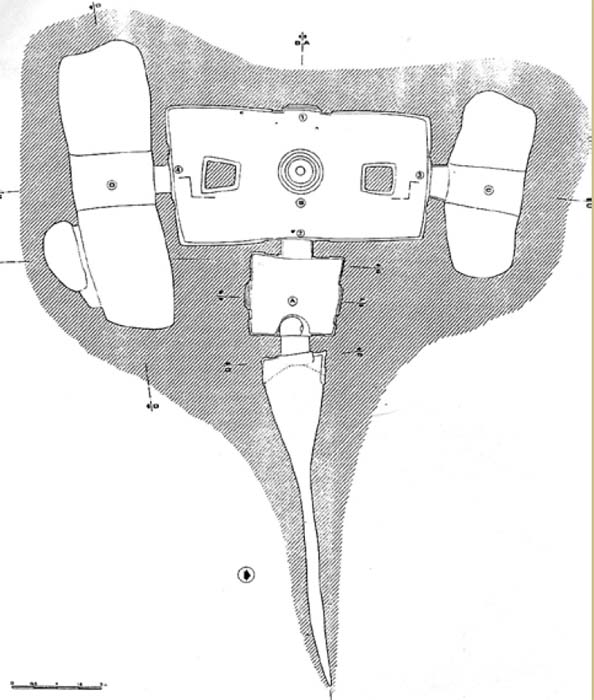
Historical notes
In 1985, the well-known archeology enthusiast Sebastiano Porcu, guided by the testimonies of the local elders, found the wonderful domus, an opening in the rock that the locals called "sas domos de sos nanon". The entire structure was then completely brought to light in 1989 by the Superintendence archaeologist Giovanni Maria Demartis who identified 4 layers of which the oldest yielded ceramic and lithic fragments attributable to the Ozieri culture and probably to the early Eneolithic.
CARD
LATEST PUBLISHED TEXTS
VISIT THE FACTSHEETS BY OBJECT

